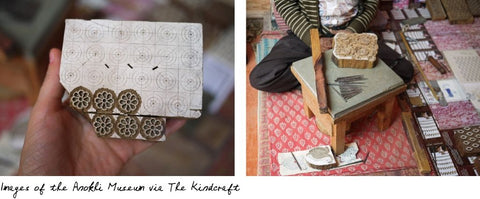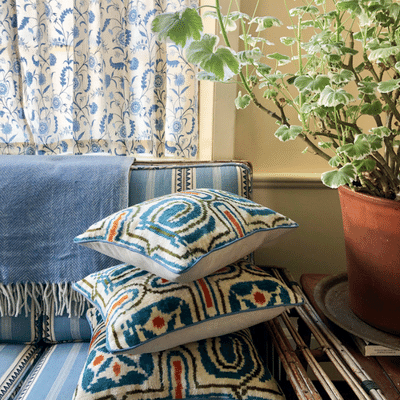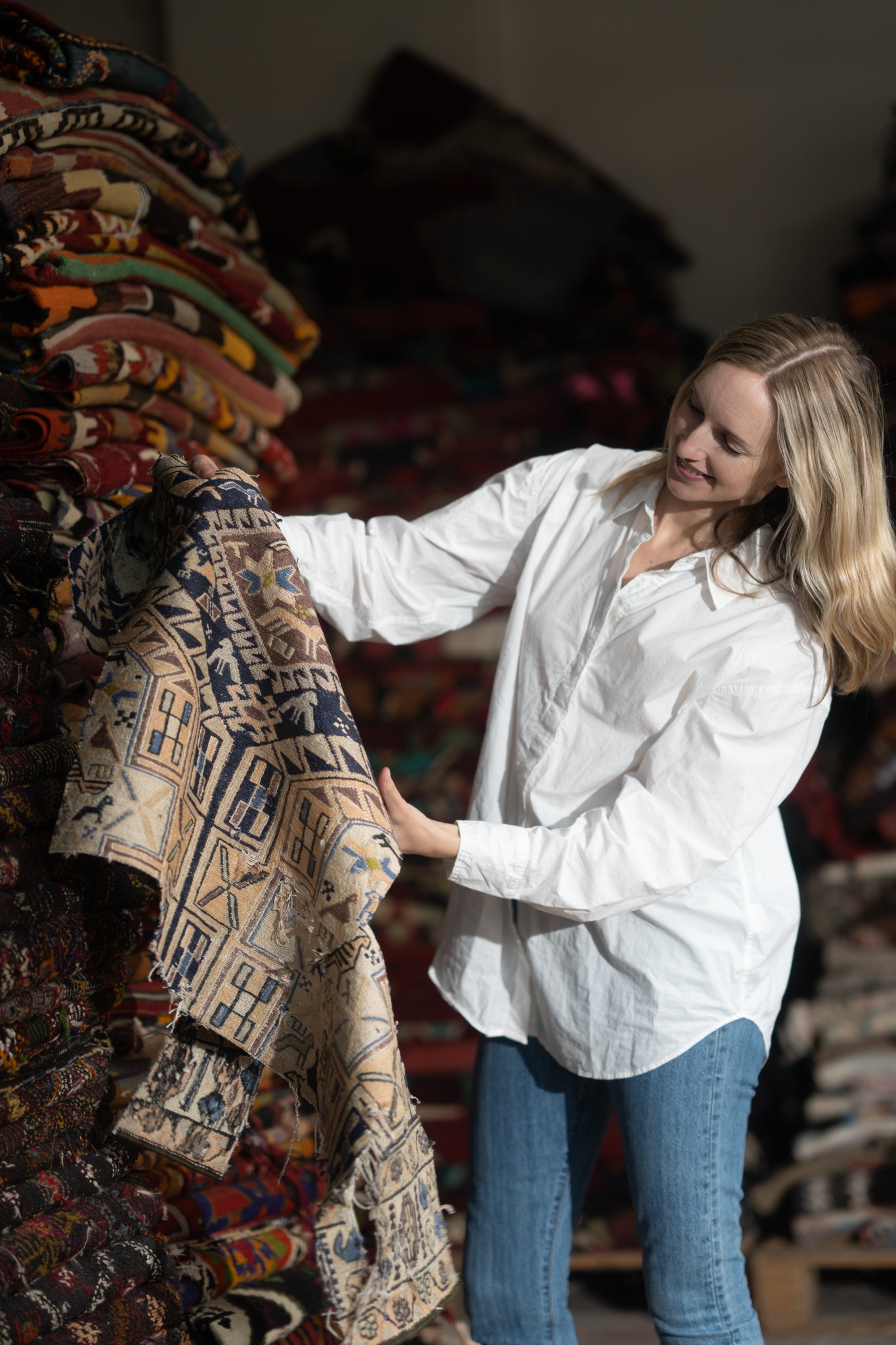All about Indian Block Prints

Dear friends,
A common thread running through everything that we create at Artemis is our passion for worldly textiles, exquisite patterns, and superior quality. This spring, our collection features both traditional Indian block print fabric, and French Jacquard. In this Journal post, we’ll cover the history and craft of traditional Indian block printing as well as its modern uses.
As background, I found this incredible classic navy and cream block print when I was shopping last fall at Boston’s own Zimmans’ fabric store. I knew immediately how beautiful it would look on our new Moss Mule shape. It’s classic, worldly, and will add a serious dash of style and pattern to the most simple outfits.
Read on to learn all about the craft of block printing in India.
xx, Milicent


Woodblock printing is one of the oldest methods that exists for transferring patterns onto textile. In this simple method, a piece of wood featuring an exquisitely carved pattern is dipped into a dye and then carefully pressed onto a textile to imprint its design.
Block printing has been practiced for thousands of years across the globe, but the craft is most closely identified with India, where it continues to be practiced by craftspeople using traditional methods handed down from one generation to the next.
History
The history of block printing stretches back some 4,000 years to ancient China. The practice eventually made its way to India around the 14th century, but experienced its golden age during the reign of the Mughal Empire (1526-1857). During this period, richly patterned block printed fabrics were desired by the Empire’s wealthy courtesans and rulers, and later by the British.
While a British love for exotic Indian imports buoyed the block print trade in the 1700s, Britain’s later actions almost destroyed it. A colonial policy that forced India to buy mass-produced printed fabric from Britain disrupted their traditional textile trade, which was further damaged by the rise of industrialization and the introduction of synthetic dyes. Subsequent developments including digitization have further threatened Indian block printing. Fortunately, artisans dedicated to preserving the craft continue to practice it in traditional workshops.

Many of these workshops are located near Jaipur, the capital of India’s Rajasthan state, which is known as “The Pink City” thanks to its colorful buildings. Its buildings and avenues were originally painted pink in honor of an 1876 visit from the Prince of Wales, but in the years since much of the color has remained.
Process
Before a block print can be created, the block itself must be made. First, the design is carefully drawn on paper by hand. The finished design is then traced over a piece of wood, which is painstakingly chiseled to create the block.The number of blocks needed to create a design will vary based on the design’s complexity, but each color will require its own dedicated block. Blocks typically range between five to eight square inches in size.

With the carver’s work complete, the job moves onto the printers, known as chippas. The chippas work using natural plant dyes that incorporate mordant, a metallic salt that helps adhere color to fabric. They dip the block into a tray filled with dye, and then align the block with the fabric. Once it is properly placed, the chippa strikes the block with a mallet to stamp the pattern. The block is then set into the next place in the pattern, which must be done carefully so that the pattern’s delicate continuity is not disrupted.
During this process, no rulers or other measuring devices are used—the process relies on the careful eye of the chippa, as well as the “registration marks” a carver leaves in the block to aid with proper alignment. Though subtle, registration marks can distinguish an authentic Indian block print from a mass-produced imitation.

After the printing process has been completed, finished textiles are typically hung to dry on the workshop roof. The last step is washing, done by workers known as dhobi, who ensure that its colors are properly set.
Modern Uses
The uses of Indian block printing have changed very little over the centuries. Today, Indian block printing is used to create clothing, turbans, curtains, tablecloths, blankets, bedspreads, and—now—shoes.

Click here to shop our Jaipur Moss Mules, which feature a beautiful Indian Block Print fabric.
Sources & Additional Info:
https://www.saffronmarigold.com/blog/wood-block-printing-fabric-india/
https://www.nytimes.com/2018/05/18/t-magazine/block-print-jaipur-india.html
https://www.tenthousandvillages.com/mosaic/block-printing-india/
https://thekindcraft.com/indian-block-printing/











